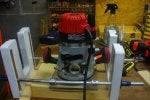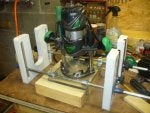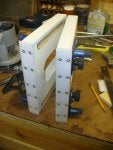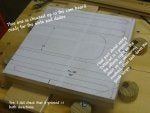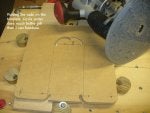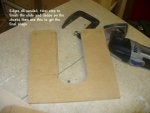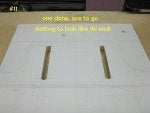Well, almost. Still got a couple of things to finish up. After much contemplation and a lot more procrastination, I finally got a ski jig put together. Likely much more complicated than need be, but I seem to have an inclination for that.
Cheeks are 3/4 MDF + 1/2 Birch plywood. Cheeks ride on 1/8" UHMW runners 1/8" wider than the cheeks. Support rods are 1/2" plated steel rods riding in 1/2" nylon bearings and attached with heavy duty (1/8" thick) conduit clamps. The base plate is 3/8" lexan and drilled for both my routers. I'm still deciding whether to drill it for the Trend.
Just doing the pics of the cheek development in this post as they were the most complex. After they were done, the rest was mostly assembly, with a couple of minor excusions with the supports.
Cheeks are 3/4 MDF + 1/2 Birch plywood. Cheeks ride on 1/8" UHMW runners 1/8" wider than the cheeks. Support rods are 1/2" plated steel rods riding in 1/2" nylon bearings and attached with heavy duty (1/8" thick) conduit clamps. The base plate is 3/8" lexan and drilled for both my routers. I'm still deciding whether to drill it for the Trend.
Just doing the pics of the cheek development in this post as they were the most complex. After they were done, the rest was mostly assembly, with a couple of minor excusions with the supports.


